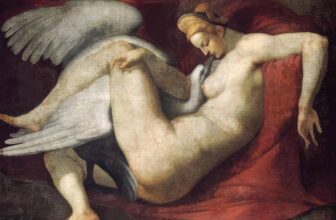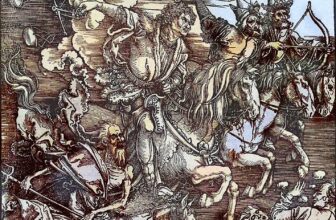What are Perugino’s Most Famous Paintings
Shopping Ads: Invest in Hidden Masterpiece: Rare Antique Oil Paintings For Sale. Limited Originals Available 💰😊 Are you looking for authentic hidden masterpiece? Explore old master antique oil paintings from the Renaissance and Baroque eras. From 16th-century portraits to 18th-century landscapes. Authenticity guaranteed, Old Master antique oil paintings for sale. Shop Now! 🎨 Renaissance And Baroque Art Old Master Portrait Paintings Landscape Antique PaintingsIn the annals of Renaissance art, names like Michelangelo, Raphael, and Leonardo da Vinci echo loudly across centuries. Yet, one name, Pietro Perugino, quietly yet significantly shaped the visual culture of the High Renaissance, particularly in central Italy. A master of perspective, serenity, and clarity, Perugino’s influence extended beyond his own brush, shaping the styles of greats like Raphael, who studied under him.
This is the story of Perugino, his masterpieces, his journey, and the enduring legacy that frames him as one of the early masters of Renaissance harmony and grace.
Who Was Perugino?
Pietro Perugino was born Pietro di Cristoforo Vannucci around 1446–1452 in the town of Città della Pieve, in Umbria, Italy. He later took the name “Perugino,” a nod to the nearby city of Perugia, where he trained and worked extensively. A product of the burgeoning humanist culture of Renaissance Italy, Perugino entered the artistic scene during a time of dramatic change, both culturally and artistically.
He trained in the Umbrian school of painting, under Andrea del Verrocchio, a studio that also hosted Leonardo da Vinci. Perugino became known for his mastery of linear perspective, gentle facial expressions, and spiritual serenity, setting the tone for future High Renaissance compositions.
By the 1480s, he had achieved wide acclaim and was one of the artists summoned to Rome by Pope Sixtus IV to work on the Sistine Chapel, a commission that solidified his reputation throughout Italy.
What Is Perugino Known For?
Perugino is celebrated for his calm, balanced compositions and his ability to infuse religious subjects with a meditative stillness that was revolutionary for its time. His paintings are marked by:
Soft landscapes with rolling hills and gentle skies
Calm, symmetrical compositions
Graceful figures with elongated proportions
A unique blend of humanism and spiritual tranquility
An early use of mathematical perspective
He was one of the first Italian painters to fully integrate linear perspective into large fresco cycles, helping to define the look and feel of Renaissance art.
His style was so distinct and successful that it was widely imitated across Italy, and some critics would later argue, perhaps too imitated by Perugino himself, whose later works repeated earlier formulas.
Perugino’s Most Famous Paintings
Perugino’s portfolio is vast and includes frescoes, altarpieces, and panel paintings. Here are some of his most iconic works:
1. The Delivery of the Keys to Saint Peter (1481–82)
Location: Sistine Chapel, Vatican City
Medium: Fresco
Arguably Perugino’s magnum opus, this fresco shows Christ giving the symbolic keys of heaven to Saint Peter. It stands as one of the earliest examples of Renaissance perspective, with a central vanishing point and an architectural backdrop echoing Alberti’s treatises on perspective.
The composition is meticulously balanced, with figures arranged symmetrically in a grand, open plaza. The serenity of the faces, the harmony of the layout, and the clarity of the narrative make this fresco a textbook example of Early Renaissance art.
2. The Marriage of the Virgin (1501–1504)
Location: Musée des Beaux-Arts, Caen, France
Medium: Oil on wood
Often compared with Raphael’s version of the same subject, Perugino’s “Marriage of the Virgin” features the Virgin Mary and Joseph in a dignified ceremonial moment. The temple in the background and circular composition anticipate the architectural grandeur of the High Renaissance.
3. The Vision of Saint Bernard (1490s)
Location: Alte Pinakothek, Munich
This piece shows the Virgin Mary appearing to Saint Bernard in a moment of divine intervention. Its emotional restraint and gentle luminosity underscore Perugino’s unique ability to balance religious solemnity with human accessibility.
4. Crucifixion with the Virgin and Saints (c. 1485)
Location: Santa Maria Maddalena dei Pazzi, Florence
A dramatic yet meditative depiction of the Crucifixion, this fresco cycle shows Perugino’s command over anatomy and emotion, framed within a clear architectural setting.
5. San Francesco al Prato Resurrection (1499–1501)
Location: Pinacoteca Vaticana, Vatican City
This altarpiece features Christ triumphantly emerging from the tomb, surrounded by sleeping guards and a heavenly light. It captures the optimism and divine clarity that defined Renaissance religious art.
What Is the Most Expensive Perugino Painting?
While Perugino’s name may not command the astronomical figures of da Vinci or Caravaggio in modern auctions, his works are still highly valued, especially due to their rarity and historical importance.
One of the most valuable Perugino pieces sold in recent history is “Madonna and Child with Saint John the Baptist”, which fetched over $5 million in a private sale. However, exact auction records are scarce due to most of his major works being housed in religious or public institutions.
Due to the lack of frequent sales, especially of his large religious panels or frescoes, valuation of Perugino’s paintings can vary significantly, but his top works easily command millions when they appear in the art market.
How Many Paintings Did Perugino Create?
Art historians estimate that Perugino created between 80 and 100 confirmed paintings and frescoes. His active career spanned over four decades, and he maintained a large workshop, which also produced numerous works attributed to his style or partially executed by assistants.
Some key facts:
Many works are signed “Petrus Perusinus”, his Latinized signature.
A number of his paintings were misattributed to Raphael, due to stylistic similarities.
Some works have been lost or destroyed, especially during wars and political upheaval in Italy.
Where Are Perugino’s Paintings Located?
Perugino’s paintings are scattered across Italy, France, Germany, England, and the United States. Here’s a breakdown of some key locations:
Italy:
Vatican City – Sistine Chapel (Rome)
Galleria Nazionale dell’Umbria – Perugia (houses a large collection of Perugino’s works)
Florence – Uffizi Gallery, Santa Maria Maddalena dei Pazzi
Rome – Vatican Museums, Santa Maria del Popolo
Città della Pieve – Perugino’s hometown, home to multiple frescoes
France:
Musée des Beaux-Arts, Caen – “Marriage of the Virgin”
Germany:
Alte Pinakothek, Munich – “Vision of Saint Bernard”
England:
National Gallery, London – Various religious panel paintings
United States:
National Gallery of Art, Washington, D.C. – Several small devotional pieces
The Story and Influence of Perugino
Perugino’s story is both inspiring and cautionary. He rose from modest beginnings to become court painter to Pope Sixtus IV, enjoying immense prestige and commissions from all over Italy.
But his reputation declined in his later years. As the Renaissance matured into the High Renaissance and then Mannerism, critics began to view Perugino’s style as repetitive and overly delicate compared to the dramatic dynamism of Michelangelo or the psychological depth of Leonardo.
Notably, Giorgio Vasari, the famous biographer of Renaissance artists, gave Perugino both praise and critique, recognizing his innovations but suggesting his later works lacked freshness.
Yet, history has been kinder. Today, art historians celebrate Perugino not only as an innovator of technique but as the essential bridge between the early Renaissance and the High Renaissance.
Perugino and Raphael: A Legacy in Transition
Perugino’s most enduring legacy may be his role as a teacher and influence on Raphael Sanzio, who began his training in Perugino’s workshop in Perugia. Many of Raphael’s early works closely resemble Perugino’s, leading to frequent confusion between the two artists.
Over time, Raphael would outshine his master, incorporating Perugino’s grace but expanding it with psychological complexity and dynamic composition. Yet, it was Perugino who first showed Raphael how to infuse serenity into religious imagery, how to structure space with logic and beauty, and how to make the divine feel intimately human.
Perugino’s Legacy Today
Today, Pietro Perugino is remembered not just as a transitional figure, but as a master in his own right.
His legacy includes:
Establishing linear perspective as a standard in large-scale religious painting
Defining the Umbrian school of painting
Training future masters like Raphael
Leaving behind one of the most iconic frescoes in the Sistine Chapel
Creating a body of work that continues to inspire art historians and spiritual seekers alike
In 2023, Italy celebrated the 500th anniversary of Perugino’s death, with major exhibitions in Perugia, Florence, and Rome, a testament to the enduring power of his brush and vision.
The Quiet Master of Harmony
Perugino may not command the same cultural cachet as da Vinci or Michelangelo, but his work speaks in whispers rather than shouts. His brush conjured peace, balance, and grace at a time when art was exploding with new ideas.
In many ways, Perugino captured the soul of the Renaissance: the human spirit reaching toward the divine, not through agony or spectacle, but through order, clarity, and luminous beauty.
To look at a Perugino painting is to step into a serene world, an eternal plaza where the skies are calm, the figures are noble, and the sacred feels tenderly human.
References & Further Reading
Giorgio Vasari, Lives of the Most Excellent Painters, Sculptors, and Architects
National Gallery of Art, Washington D.C.
Galleria Nazionale dell’Umbria
Vatican Museums, Rome
Exhibition Catalogues from “Perugino: Il Maestro di Raffaello” (2023)




